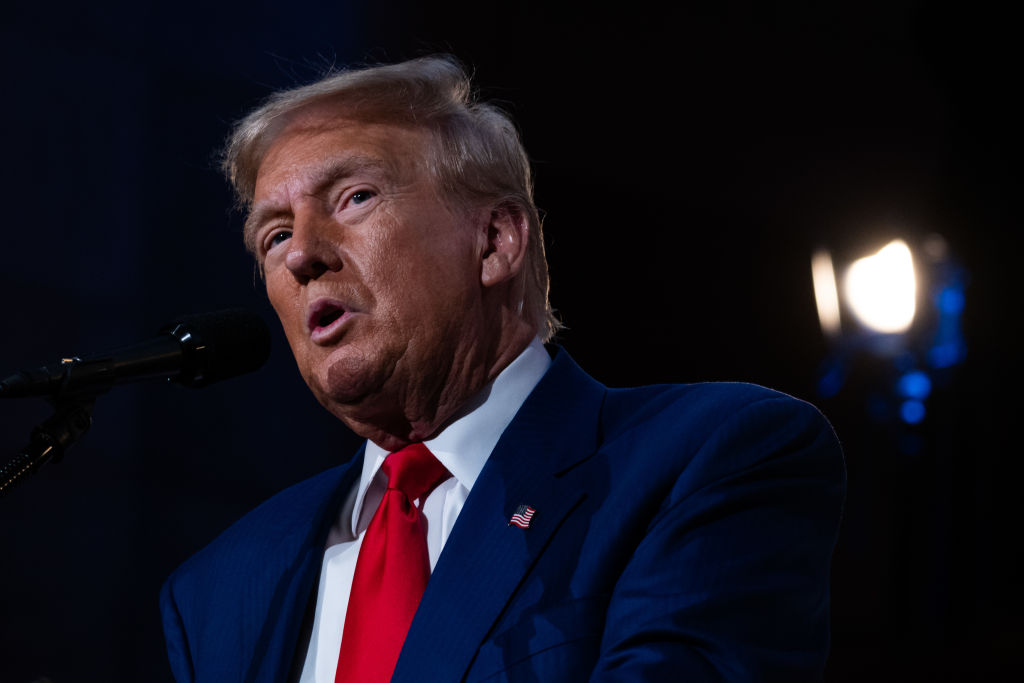Where to Invest in 2008
Profit handsomely from what's happening half a world away.
To paraphrase Dickens, think of 2007 as a tale of two economies. The home-building bust, crumbling housing prices and mounting credit woes sapped the domestic economy. As a result, stocks tied to housing and the U.S. economy sagged. But such businesses as natural-resource producers and capital-goods exporters, which are tethered to the robust global economy, had more bounce in their step, and shares of those companies sizzled.
| Row 0 - Cell 0 | Heebner's World View |
| Row 1 - Cell 0 | 2008 Bond Forecast |
| Row 2 - Cell 0 | 5 Things That Could Rattle the Market |
In 2008, we expect a similarly bifurcated stock market. The U.S. economy and consumer will be subdued, but investors will have plenty of opportunities thrown up by the boom in emerging markets. As bombs continue to explode in the portfolios of U.S. banks, international sales of American goods and services will surge. The fortunes of various industries will diverge widely.
With more uncertainty than usual about the health of the U.S. economy in general and the banking system in particular, expect plenty of big ups and downs from stocks in the year ahead. One plus for stocks is that they are relatively cheap. As a result of the market's flop this past fall, Standard & Poor's 500-stock index traded in mid November at 14 times estimated 2008 earnings. That's a bit below the market's average long-term price-earnings ratio and cheap compared with current interest-rate levels.

Sign up for Kiplinger’s Free E-Newsletters
Profit and prosper with the best of expert advice on investing, taxes, retirement, personal finance and more - straight to your e-mail.
Profit and prosper with the best of expert advice - straight to your e-mail.
The rub is that the market may not be as cheap as it looks. Analysts expect S&P 500 earnings to jump 14% in 2008, says Thomson Financial. But if the economy flirts with recession and if financial companies continue to take massive write-offs on mortgage investments gone sour, growth of that magnitude is a pipe dream.
We think U.S. economic growth will be anemic -- less than 2% -- in the first half of 2008, but it stands a good chance of staying positive. The Federal Reserve's interest-rate cuts in the summer and fall of 2007 will stimulate the economy. Employment has held up (so far) and incomes are growing. Millions of Americans are drowning in too much mortgage and consumer debt, but enough of them are spending to make a recession unlikely (consumer spending accounts for 70% of the total U.S. economy).
Add it all up, and the S&P 500 should return between 5% and 10% over the coming year (on the lower end of the range if profits are soft, on the higher end if they are anywhere near analysts' forecasts). Look for stocks to struggle early in the year in response to negative news about the economy and earnings and to pick up in the second half as investors start anticipating better times in '09.
The overseas factor
Powerful demand from abroad has been puffing up profits of multinational U.S. companies -- from Boeing, Caterpillar and Schlumberger on the industrial side, to Coca-Cola, Colgate-Palmolive and McDonald's on the consumer end. S&P calculates that overseas revenues for the companies in the S&P 500 have jumped from 32% in 2001 to 48% in 2007 (see the chart below). Joseph Quinlan, chief market strategist for Bank of America Capital Management, thinks that as much as 80% of the earnings growth of U.S. companies came from abroad in 2007. "Foreign profit growth was the dominant factor boosting the S&P 500 in 2007," agrees Bank of America economist Lynn Reaser. We fully expect the trend of rising exports to continue in 2008. (For more on the role of exports, see Exports Steer the Economy.)
You can view the economic crosscurrents this way: The housing collapse has been subtracting about one percentage point of gross-domestic-product growth each quarter from the $14-trillion U.S. economy. Net export growth has been generating a point or more of GDP growth, offsetting the ailing domestic economy. Score one point for the potent force of globalization, often denounced at home and abroad.
Once you get over the U.S.Us receding importance as the principal engine of global economic growth, it's easy to spot investment opportunities. Just ask Ken Heebner, a master at creatively riding emerging markets from his perch in Boston (see Heebner's World View). The manager of CGM Focus fund (a member of the Kiplinger 25) thinks the aspirations of residents of developing countries such as China and India will help the U.S. economy avoid slipping into recession in 2008. "If the consumption and demand for industrial goods of 2.5 billion people is surging, that dwarfs fluctuations in what happens in the U.S. and in Europe," he says. "It's very hard for people sitting in the U.S. -- where we've always called the shots economically and globally -- to see that it's different this time."
The dollar's impact
So how should you invest in 2008? We think the sweet spot will be large, growing companies that book substantial business overseas, where economic growth is two to three times higher than in the U.S. The weak greenback bolsters American competitiveness and translates into higher sales and earnings for U.S. companies. "The further away you are from the subprime mess, housing, and industries related to discretionary consumer spending, the better off you'll be,S says Jeff Schappe, chief investment officer at BB&T Asset Management.
To find attractive stocks, study the foreign exposure of sectors in the S&P 500. Stocks of industries with the highest overseas exposure -- energy, materials, technology and consumer staples -- tended to perform best in 2007. The most domestically oriented sectors -- financials and consumer discretionary (home building, autos, apparel, retailing) -- performed poorly. U.S. consumer demand will remain subdued in 2008, so it makes sense to continue favoring businesses leveraged to global growth.
One simple way to size up the situation is to figure out which goods and services are required by burgeoning emerging markets, which now generate the bulk of global economic growth. For instance, China and India are investing massively in infrastructure, such as roads, airports and power plants. Kevin Shacknofsky, co-manager of Alpine Dynamic Dividend fund, says China is constructing electrical grids on the scale of Philadelphia's every year. So he holds infrastructure-building stocks, such as Fluor and General Electric, as well as ABB and Atlas Copco of Europe (ABB and GE are members of the Kiplinger Green 25; see 25 Ways to Invest in a Cleaner World).
Developing nations have an insatiable demand for oil, copper, iron ore, soybeans and other natural resources. Demand for these resources tends to grow briskly when people in poorer nations start migrating into the middle class. "A large swath of humanity in economies that are emerging want the same lifestyle we have," says Robert Arnott, of Research Affiliates. He notes that while prices of dollar-priced commodities such as oil are rising for Americans, the picture looks different from the perspective of foreigners enjoying appreciating currencies. That's why stocks such as energy producer ConocoPhillips, Freeport-McMoRan Copper & Gold and soybean giant Bunge surged in 2007.
Demand for technology is healthy both at home and abroad. U.S. businesses have much sounder balance sheets than consumers and continue to spend on capital equipment, including technology. "Technology will lead the charge," says Bob Turner, of the Turner funds. "There has been a lack of tech spending for seven years, but we're seeing a pickup." Bank of America's Quinlan favors tech outfits with a lot of international exposure, such as Cisco and Microsoft. Besides Cisco, Turner likes data-networking firms, including Ciena and Juniper.
Even managers of small-company stock funds are searching for tech and other enterprises buoyed by global growth (large companies have an average of three times as much direct overseas exposure as small businesses). For example, Jeffrey James, manager of Driehaus Small Cap Growth, has invested in small companies that supply parts and technology to the aerospace, oil-services and agriculture industries, all big exporters. Two stocks he likes are Titan International, which supplies tires to Deere & Co. for its farm equipment, and Oyo Geospace, which develops seismic technology for the oil-and-gas industry. "We're finding the greatest success with U.S. companies that have a large part of their business overseas," he says. "Companies that are completely domestically focused are having a tough time."
Defensive growth stocks
Consumer staples and health care -- both defensive growth sectors for investors -- will enjoy several tailwinds in 2008. Large concerns, such as Procter & Gamble, Coca-Cola, Altria and Johnson & Johnson, generate a growing proportion of their sales and profits abroad and have strong franchises in developing markets. Such high-quality companies have healthy balance sheets and produce robust and consistent cash flows -- which means that, unlike many small companies, they don't depend on access to shaky credit markets for capital.
Steady growers, such as Colgate-Palmolive and Merck, have the products and the financial stamina to sustain growth during a consumer slowdown in the U.S. In fact, the 10% or 11% earnings-growth rates that Merck and Colgate are expected to generate over the next few years will look attractive in a sluggish economy. Investors will be willing to pay a premium for these consistent growers, which implies rising price-earnings ratios and, hence, rising share prices.
Like many market strategists, Stuart Freeman, of A.G. Edwards, thinks 2007 marked the start of a cyclical shift from value stocks (those selling at low prices relative to earnings and other key measures) back to growth stocks. He favors defensive growers, such as PepsiCo and Eli Lilly.
Style shifts tend to move in five-year cycles, says Turner, who thinks shares of growth companies are more attractively priced than traditional value stocks. He likes asset managers, including Charles Schwab and T. Rowe Price, and companies that run financial exchanges, such as Chicago Mercantile Exchange and Nymex.
How do stocks compare with bonds? Strategists such as Freeman and Duncan Richardson, of Eaton Vance, think stocks will beat bonds handily in the coming year. They like to compare the yield on the ten-year Treasury note with the earnings yield of stocks (the inverse of the price-earnings ratio, essentially representing what stocks would yield if companies paid out all of their earnings as dividends). When the earnings yield on stocks is much higher than the Treasury yield -- it's currently 6.4% on S&P 500 stocks, based on 2007 earnings estimates, versus 4.2% for ten-year Treasury notes -- they give the nod to stocks (for our take on fixed-income markets, see For Bond Investors, Better Safe Than Sorry).
So we're moderately optimistic about stocks in 2008, despite fierce headwinds from the housing and credit markets and beleaguered consumers. But expect greater market volatility. Steve Bleiberg, chief investment officer at Legg Mason, notes that higher volatility is normal when economic growth slows and periodic negative data frightens investors. As in 2007, mines blowing up in the mortgage-backed securities market will continue to hit stocks.
Where to invest overseas
There are several ways to tap into large global growth companies. Heebner masterfully plays global growth with his concentrated CGM Focus (symbol CGMFX). We also like Marsico 21st Century (MXXIX), which includes a good helping of stocks of midsize growth companies as well as those of large corporations.
You can access growth abroad through steady overseas funds, such as Artisan International (ARTIX), run by Mark Yockey; Harbor International Growth (HIIGX), steered by Jim Gendelman; and Julius Baer International Equity II (JETAX), managed by Rudolph-Riad Younes and Richard Pell. Or you can hedge your bets with a global fund such as Rob Gensler's T. Rowe Price Global Stock (PRGSX), which may rotate between U.S. and foreign stocks (including those in emerging markets) as Gensler sees fit.
To profit from the economic boom in emerging markets, which will continue to elevate demand for oil, metals and other commodities, consider a natural-resources fund. Two we like are T. Rowe Price New Era (PRNEX), which is heavily invested in commodity stocks, and Fidelity Select Natural Resources (FNARX).
Get Kiplinger Today newsletter — free
Profit and prosper with the best of Kiplinger's advice on investing, taxes, retirement, personal finance and much more. Delivered daily. Enter your email in the box and click Sign Me Up.
Andrew Tanzer is an editorial consultant and investment writer. After working as a journalist for 25 years at magazines that included Forbes and Kiplinger’s Personal Finance, he served as a senior research analyst and investment writer at a leading New York-based financial advisor. Andrew currently writes for several large hedge and mutual funds, private wealth advisors, and a major bank. He earned a BA in East Asian Studies from Wesleyan University, an MS in Journalism from the Columbia Graduate School of Journalism, and holds both CFA and CFP® designations.
-
 Stock Market Today: Trump Retreats, Markets Rejoice
Stock Market Today: Trump Retreats, Markets RejoiceStocks rally, yields soften, the dollar rises, and even beaten-down names enjoy the wages of potential trade peace.
By David Dittman
-
 In Trump’s Economy Should 401(k) Savers 'Set It and Forget It?'
In Trump’s Economy Should 401(k) Savers 'Set It and Forget It?'It’s hard to bury your head in the sand when the markets are volatile. Here’s when it makes sense and when it doesn’t.
By Donna Fuscaldo
-
 The Economic Impact of the US-China Trade War
The Economic Impact of the US-China Trade WarThe Letter The US-China trade war will impact US consumers and business. The decoupling process could be messy.
By David Payne
-
 What DOGE is Doing Now
What DOGE is Doing NowThe Kiplinger Letter As Musk's DOGE pursues its ambitious agenda, uncertainty and legal challenges are mounting — causing frustration for Trump.
By Matthew Housiaux
-
 A Move Away From Free Trade
A Move Away From Free TradeThe Letter President Trump says long-term gain will be worth short-term pain, but the pain could be significant this year.
By David Payne
-
 Trump’s Whirlwind Month of Crypto Moves
Trump’s Whirlwind Month of Crypto MovesThe Kiplinger Letter The Trump administration wants to strengthen U.S. leadership in the cryptocurrency industry by providing regulatory clarity.
By Rodrigo Sermeño
-
 What Could Derail the Economy This Year?
What Could Derail the Economy This Year?The Letter While the outlook for the U.S. economy is mostly favorable, there are plenty of risks that bear watching.
By David Payne
-
 Three Ways President Trump Could Impact the Economy
Three Ways President Trump Could Impact the EconomyThe Letter Some of Trump's top priorities could boost economic growth, but others risk fueling inflation.
By David Payne
-
 10 Predictions for 2025 from The Kiplinger Letter
10 Predictions for 2025 from The Kiplinger LetterThe Kiplinger Letter As 2025 arrives, here are our top 10 forecasts for the new year.
By Letter Editors
-
 Europe Faces Economic and Political Headwinds Next Year
Europe Faces Economic and Political Headwinds Next YearThe Letter Challenges for Europe: Potential tariffs, high energy prices and more competition from China will weigh on the bloc in 2025.
By Rodrigo Sermeño